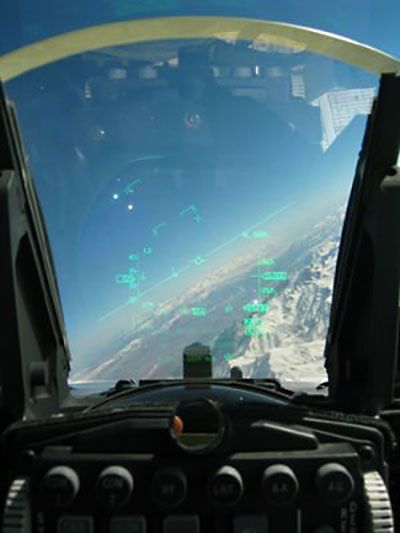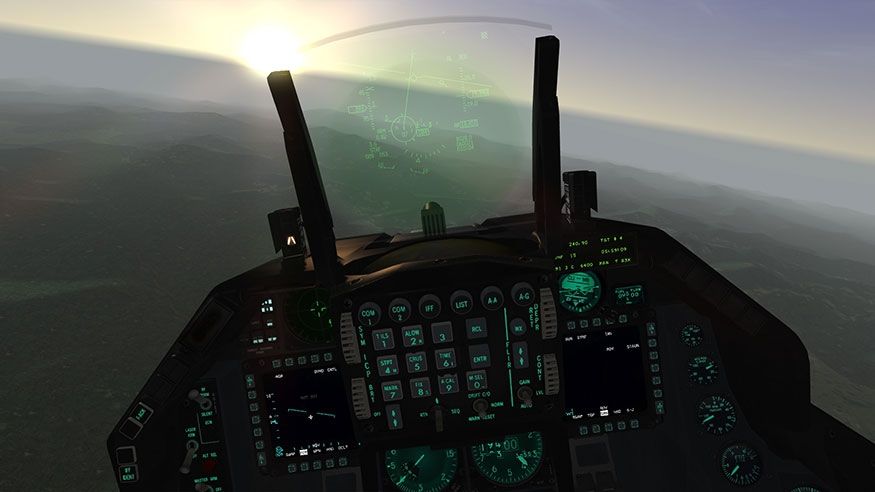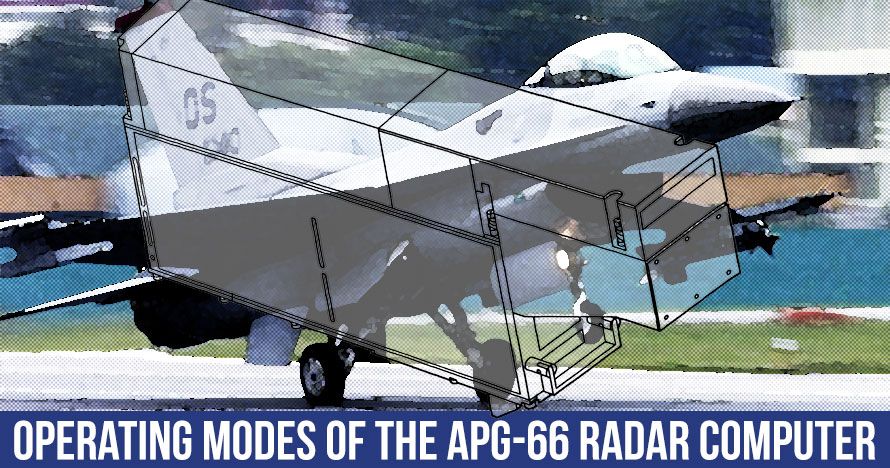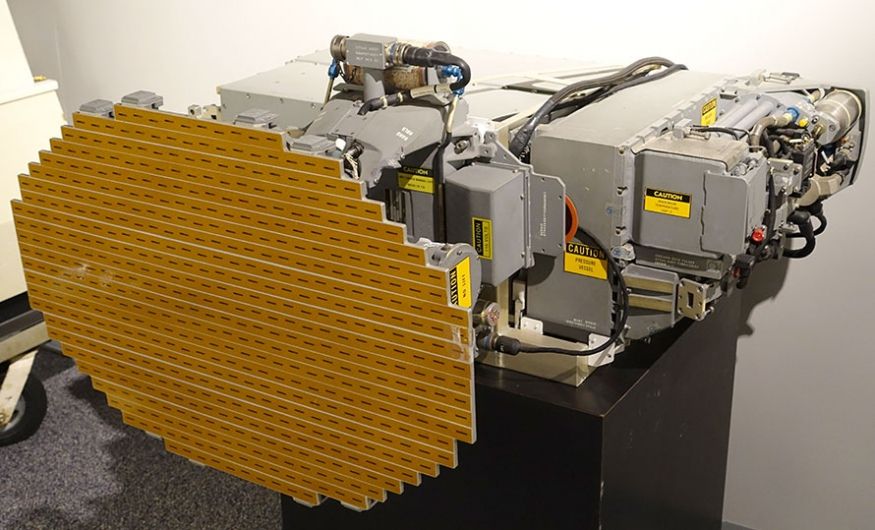The Head-up Display, or HUD, is the glass window at the front of a cockpit that displays important aircraft data and combat information to the pilot. Putting the important information in the pilot’s flight view keeps them from looking down into the cockpit, and thus greatly improves situational awareness.
 The HUD evolved from early aircraft gun sights like the Reflector Sight which was first used in a fighter aircraft in 1918 and it’s descendant, the Gyro Gunsight first used in 1939 during World War II. The next big step which led to the first head-up display being put into fighter aircraft came in 1958. This HUD would include the attack sight and also navigation and weapons information.
The HUD evolved from early aircraft gun sights like the Reflector Sight which was first used in a fighter aircraft in 1918 and it’s descendant, the Gyro Gunsight first used in 1939 during World War II. The next big step which led to the first head-up display being put into fighter aircraft came in 1958. This HUD would include the attack sight and also navigation and weapons information.
Today’s F-16 Fighting Falcon‘s radar, the APG-66/68 is very technologically advanced with excellent look down capability. Integrated with the visual combat mode, this radar is able to project a picture of the target onto the head-up display. This enabled the pilot to see the target on the HUD while approaching it beyond visual range.
The early F-16 HUD was a monochrome cathode ray tube (CRT) display. Since Block 50/52 the HUD has had a color liquid crystal display (LCD). Following the Mid-Life Update (MLU) the HUD has been compatible with night vision goggles.
So, what are the types of data an F-16 pilot sees on the head-up display? We’ll share just a few of them below.
10 Types of Data Displayed on the F-16 HUD
- Aircraft Flight Data – Airspeed, altitude, horizon line, slip/skid indicators, turn/bank (G-forces)
- Navigation Data – this information aids the pilot in approach and landings
- Flight Path Vector – shows the direction the aircraft is actually going to follow
- Angle of Attack Indicator – displays the wing’s angle compared to the airflow
- Target Designation Indicator – puts a marker over an air or ground target
- Range to Target – distance from aircraft to a selected target
- Launch Acceptability Region – notifies pilot if the weapon is within its range of a target
- Closing Velocity with a Target – the speed at which the aircraft is getting closer to a particular target
- Weapon Seeker – shows where the sensor is aiming
- Weapon Status – complete information concerning the number of weapons, what is selected, and whether they are armed
What this data provides an F-16 pilot is confidence. The fighter pilot knows that even if they are on a night patrol over a distant land they will be very capable of handling any situation that threatens them. While in a combat engagement their HUD will allow them to keep their eyes fixed on the approaching target and identify it even if they cannot visibly see it in the dark. They will be able to check their weapons availability, engage the right missile for the job, lock onto the target, and still know the important flight information about their aircraft. All this mission-critical data is available to them while never needing to look down into the cockpit and away from that threat.
Duotech repairs a wide range of HUDs for several different aircraft (F-16 Fighting Falcon and F-5 Tiger II), delivering under budget and within deadlines. Learn more and request a quote today.

Get Your F-16 Fighting Falcon Fast Facts Infographic






